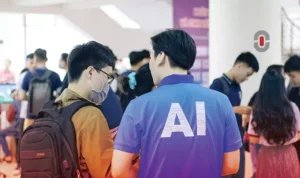Translation has changed a lot in recent years by the advent of Artificial Intelligence (AI). The AI revolution can be observed in almost every language translation, but it’s also very present in Japanese, where AI technologies are somewhat revolutionizing the way content is localized and customized for the audiences.
AI-powered translation tools are now capable of processing and understanding Japanese text with unprecedented accuracy and efficiency thanks to machine learning algorithms. AI tools have paved the way for customization options, allowing translation experts to tailor their work to the preference of the audience while still providing accuracy.
How do AI Translation tools work?
AI-powered translation usually utilizes advanced machine learning algorithms to analyze and understand the text of the given language. For the Japanese language, for example, the algorithms are trained on huge amounts of text data such as articles, literature, online content, which enables them to recognize patterns, grammar and context.
Promt
AI writing tools can provide a diverse range of content outputs such as summaries, product descriptions, blog posts or anything else you can think of. Such tools can adjust their writing style to adjust to whatever purpose of the content, delivering customized results tailored to specific industries and audiences. To use those tools effectively, users need to include specific instructions on the topic, outline, examples, tone, style, relevant points and other important elements of the text that may provide more context.
Content generation
AI writing tools produce a piece of content that it deems closely aligned with your request. Users can try different prompts or modify a prompt to refine the AI tool’s answers.
Weaknesses of AI
One of AI’s weaknesses is that it translates sentence by sentence. For example, in English the word “bank,” which can refer to a financial institution where one keeps money or to the side of a river may leave readers uncertain about its meaning. However, as they progress through the text, the context clarifies which interpretation is intended. Unfortunately, current AI systems may not consistently maintain this contextual understanding throughout the entire document, potentially leading to inaccuracies in translation or interpretation.
When translating Japanese, for example, AI translates relative pronouns or conjunctions by flipping the order of what becomes before and after. This tendency stems from the incorporation of data rooted in traditional Japanese translation approaches, which prioritize this structure. Despite the prevailing practice in Japan favoring a non-inverted order, AI persists in adopting this method.
Custom Translation
 To improve on AI’s potential weaknesses translators can incorporate additional elements into translations to make them more customized. There are several things translators can incorporate so that they can adapt to the world of AI translation while still improving on the automatic translations. As suggested by Mizuhito Kanehara, here are a few things translators can use a more customizable approach which can engage the audience and make the translation more interesting. Translators, for example, can:
To improve on AI’s potential weaknesses translators can incorporate additional elements into translations to make them more customized. There are several things translators can incorporate so that they can adapt to the world of AI translation while still improving on the automatic translations. As suggested by Mizuhito Kanehara, here are a few things translators can use a more customizable approach which can engage the audience and make the translation more interesting. Translators, for example, can:
- Explore the realm of “adaptations,” where translators arrange original works in their unique way, adding value and creativity to the translation process.
- Offer tight translations to readers, allowing them to customize aspects such as language style and character nuances.
Translators can also work by collaborating and communicating in real-time via translation management systems, which allow translators to collaborate on projects, discuss specific translation challenges, and share feedback.
Conclusion
AI has certainly been a game changer in translating Japanese, but language professionals can still offer tailored translation services that cater to the specific needs of audiences and industries. Customized translation can enhance the accuracy and quality of translations but also open up new opportunities for translators to adapt to the ever evolving translation landscape. As AI continues to evolve, translators may feel threatened by automatic translations, but customization according to individual preferences and requirements may become a key component to translation, shaping a more specialized language service.
